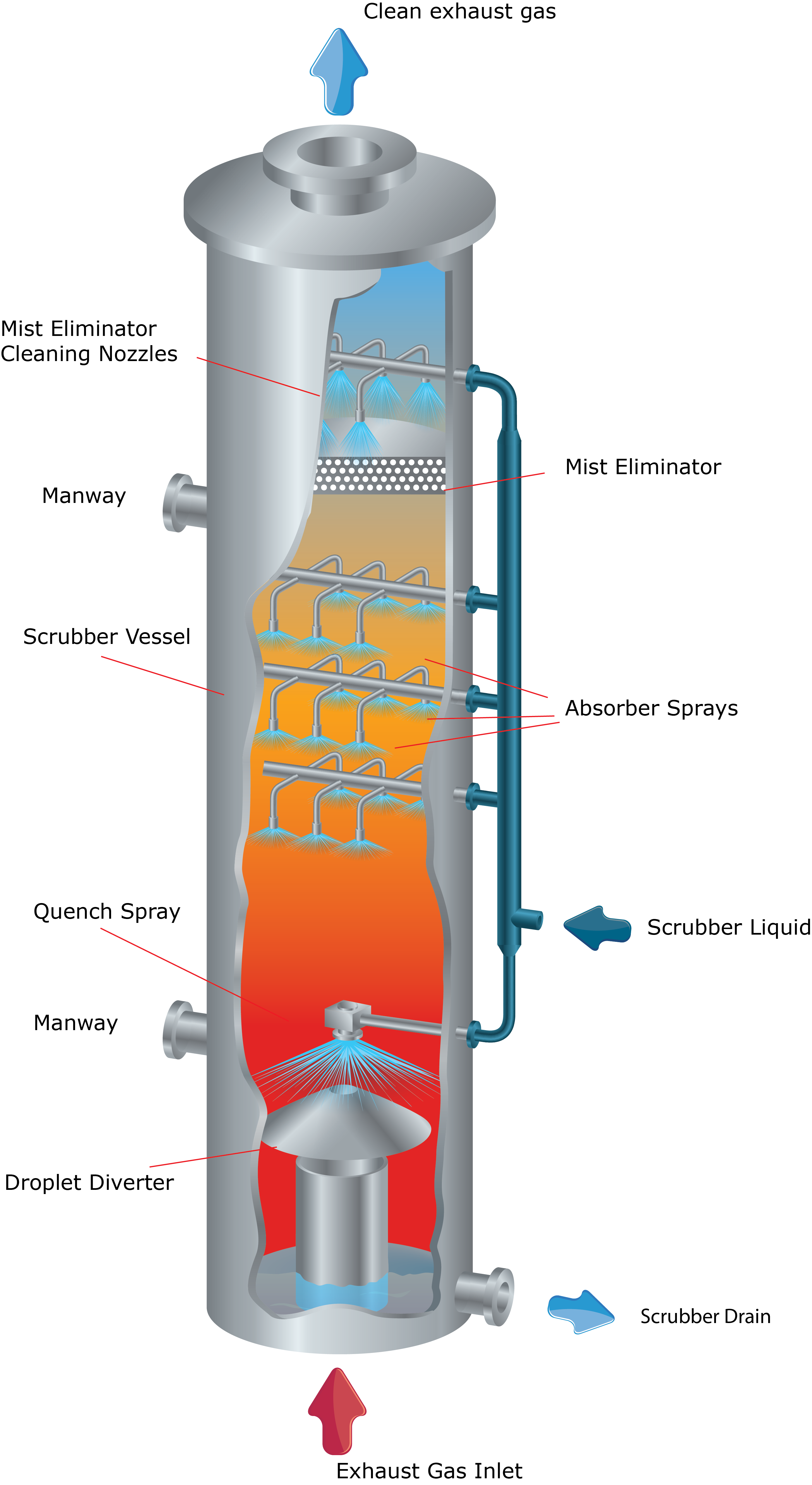Nozzles for flue gas desulphurisation in power generation
The removal of pollutants from exhaust gases is a common application in any fossil fuel power station. The basic principle is to spray a fluid into the gas flow that will react with the gas forming a compound that will fall under gravity thus removing the pollutant. Examples include the removal of sulphur dioxide by spraying an alkaline lime slurry into the flue. This reacts with SO2 to form calcium sulphate (gypsum) and water. The gypsum is a solid at the temperatures in question and so falls to the ground where it can be collected and used for a variety of building materials.
Ca(OH)2 (solid) + SO2 (gas) → CaSO3 (solid) + H2O (liquid)

Typically the nozzles used in such applications will need to produce a relatively fine spray over a large area but will also need to produce a spray that will not be simply swept away quickly by fast moving flue gases.
Normally we recommend spiral nozzles for such applications. Full infromation on these nozzles can be found by clicking on the boxes below.